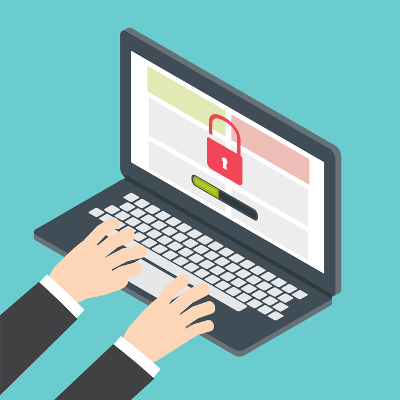Do you suspect your computer might be infected with malware? While some malware, such as ransomware, is notoriously difficult to remove, many malicious programs can be removed by computer users with basic skills and computer security tools.
Symptoms of a Malware Infection
Malware is often poorly written and tends to gobble up system resources. Thus, your computer may be sluggish. If performance suddenly drops, malware could be the culprit! While other issues could be at play, it’s smart to rule out a virus, spyware, or some other form of malware.
In addition to sluggish performance, other common malware symptoms include: annoying pop-ups, a change in home page in your web browser, strange programs starting automatically on your computer, computer crashes, and running out of space on your hard drive.
Unplug from the Network and Internet
If you suspect a malware infection, disconnect your computer your network and the Internet to help contain the threat and keep your system from sending private data or downloading additional malware.
Reboot into Safe Mode or Safe Mode with Networking
Booting into Safe Mode means that just the bare bones of your system will be loaded. Oftentimes, the malware will be prevented from loading in this mode, allowing you the opportunity to remove it without interference.
If you need to update your computer security software, use an online malware scanner from a trusted authority, or download a new malware removal tool from a trusted authority, you’ll need to boot into Safe Mode with Networking which will allow you to access the Internet.
Scan for Viruses
Once in Safe Mode, run a complete virus scan using your computer security software. If you haven’t scanned your system in a few days, a full scan may very well find and remove the threat.
If that doesn’t do the trick, you may want to try using an online scanner or a malware removal tool from a different service provider — a trusted one, not some random security tool that popped up on your screen. In this case, you’ll either need to use Safe Mode with Networking to obtain the new download or download the software onto a USB drive from another uninfected computer.
The second tool may find what your primary tool missed.
Try a System Restore
If the steps above failed to detect and remove the malware, you could try a System Restore (if enabled) to restore your system to a previous working state without affecting your data and files. For example, if you have a Restore Point from three days ago and your computer became infected today, restoring it to its state from three days ago may solve the problem.
Again, this should be done while in Safe Mode, but it will only work if you previously enabled System Protection.
Get Professional Help
If you need help removing malware, calling in the professionals may be in order. Malware is often programmed to download more malware, in which case, your computer could have multiple infections. Businesses in the New Jersey area can call on Quikteks for help in removing malware and preventing future infections.
Post-Malware Removal Housekeeping Tasks
After removing malware from a computer, you may need to change a few settings — and you’ll definitely want to shore up its defenses.
• Check your homepage settings — First, go to Control Panel > Internet Options and check to be sure that your Home Page settings have not been altered for Internet Explore / Edge. If you use a different browser, go the that browser’s settings section and do the same. Malware often changes the default home page in an attempt to show you ads, trick you into downloading more malware, and for other malicious purposes.
• Change your passwords — You should be doing this periodically anyway, but it’s especially important after a malware infection as malware often captures and transmits your online banking and other credentials to its own servers and users.
• Upgrade your computer security — If you didn’t previously have a solid computer security program on your computer, now’s the time to get one. If you have one, review its settings and your practices. For example, do you have automatic updates enabled? Are its realtime scanning and anti-spam features enabled? Do you click on links and attachments in unsolicited emails?
• Back up your data frequently — Do you have a backup system in place? If not, once again, now’s the time to get one. If you do, review its settings. Are you backing up daily? Hourly? In real time?
Removing malware from a computer is often possible, but not always. Having systems in place to prevent an infection, or as a last resort, restore your data is a must. Give us a call to help you remove malware on your business PC.

